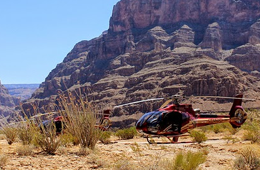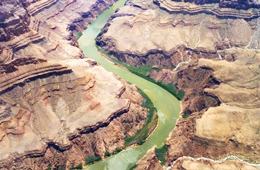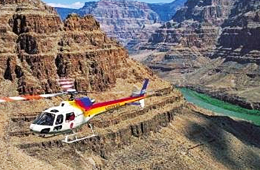2016 Marks the 100th Anniversary of Our National Park System

A few weeks ago I was sitting around a small campfire with a few friends. There were guitars, stars, beers and open hearts. It was a great night. This is how we enjoy a bit of down time. We get together with our friends and their families, we eat great food, have a few drinks, talk about our projects, listen to music, and enjoy our kids. I’m not going to lie we are a bit of an artsy tribe of people. A creative group. And we have so much gratitude when we are together. It’s a feeling that is hard to explain and I hope I don’t have to. I hope you have that feeling with your people too. If you don’t, please find the people that make your heart sing. Life is precious. And sharing it with people who inspire you to live well is the best way to live it. (If the mushy gushy intro here isn’t your speed, pardon my nostalgia because I promise you practical stuff and sciency things are happening in this article).
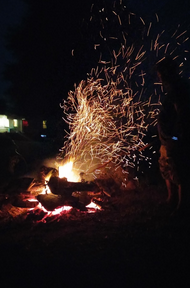
It never fails. When we get together we always end up picking up a few serious topics in the midst of raving about someone’s stellar soup, talking about a show coming up, sharing a bit of shop talk from our jobs and promising to get together more often. Many of us had recently met a man (a delightful bearded hippie) at a local festival who had left California after living there for years to head east. He had told us that the mountain he lived on had went up in flames due to the wildfires not long after he left. He knew it was coming his way. We were talking about his badass tie dye work. Then we talked about the fires. The parks. The current state of things. And that, my friends, is what lead me to write this piece.
“The idea of wilderness needs no defense, it only needs more defenders.” – Edward Abbey
Do you dream of going back to the Grand Canyon? Are you already picking out camping gear for your little one while sharing ultrasound pictures? Do you love taking pictures of the bison at Yellowstone? Birdwatching in the Everglades? Hugging the majestic ancient trees of the Sequoia?
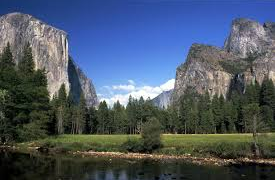
We, the united super groovy people, have a responsibility to our National Parks. National Parks are home to our history. Historic monuments. Places that tell our stories. Not only are they places where we can take our loved ones to connect with nature, a place to escape the hustle and chaos of urban life, and a place to experience protected wildlife, they are essential to the preservation of life. One-third of our endangered and threatened species can be found inside these parks. And it is clear that without our National Parks, we may not have any wildlife left. Let me explain this real quick.
- Go ahead and take a look at this 1997 map of public forest land ownership versus private forest land ownership, you will see that there is a great deal more privately owned forest land in this country than public. Let all that green that is privately owned forest land sink in for a minute.
- Now head on over to Google Earth because finding an updated map of forest land on a government website may make you a bit crazy. So hit Google Earth up and take a peek at the U.S. To the left of your screen you can select 3D buildings (essential for a lot of features) and select Global Awareness. When you do this and then begin to zoom in over much of the privately owned forestland in this country, it becomes painfully clear that most of it is not owned by Uncle Bob and Aunt Pam. Also don’t assume that the green is still forest land. Zoom in my friends.
But we are here to focus on what we can do. Let’s do it.
We know our parks need help. We know we all need to be more active citizens. We know that we want life to flourish. That we want to keep these parks protected. So let’s talk about solutions, things we can do to make sure that a Grand Canyon tourist vacation, or a senior trip to Yosemite, and all of the magic of our parks that bring visitors from around the globe are still in tact for future generations.
1.)Share Your Park Story. Sharing our stories from being at the National Parks is easy, free, and you can do it right from your desk or phone. It’s a way to keep people talking about our parks. The National Parks Conservation Association wants your stories to remind our leaders of how much we value our public lands. While you are there go ahead and read some of the stories from around the country. And around the world. Share your story and read others.
2.)Volunteer to Help Tell and Discover the Untold Stories. Contact your National Parks and offer your services and expertise. According to National Geographic about “two-thirds of the National Park Service’s 392 areas were created to protect historic or cultural resources” and many lack the staff and resources to use them to their potential. In this same article James Nations of the NPCA is quoted :
“We have an incredible collection of museum artifacts, and 45 percent of the Park Service collections have not been categorized ….we’ve got stuff, and we don’t even know what we’ve got and we don’t have places to store it. We’re missing opportunities to tell the story of America through our national parks.”
If you have any time at all and an area of expertise you may be able to offer, reach out. For total research geeks like me the whole concept sounds exciting. A chance to help out the parks and contribute to our history.
3.)Give to the Grand Canyon Scholarship for teachers. I recently stumbled across a story picked up by Huff Post Education. A blog post from Steve Newton, the Programs and Policy Director for the National Center for Science Education. He had just returned from the NCSE’s annual rafting trip down the Colorado River through the Grand Canyon. Included in the trip with others were two teachers who had been selected to receive an all expense paid trip. The NCSE is committed to further enhancing their relationships with teachers. These recipients can then return to their classrooms and use their experiences to enhance and further develop curriculum. Click here to donate now. And click here to read Newton’s post. And if you are a teacher interested in applying for this scholarship for the tentatively scheduled July 2016 trip, then check in here to follow up.
4.)Sign those petitions. One of the issues National Parks face, as well as privately owned forest land, is that development on nearby land affects the ecosystems within parks. This is a truth that can’t be ignored. So whether you are committed to one of your nearby National Parks
or one that was visited with your grandpa once when you were 12, make your voice heard. Visit individual park sites for updates, the NPCA site, or environmental interest sites. As a matter of fact, a recent article in Mother Jones provided a ranking of air pollution from the NPCA. It is a sobering view of how the developed world’s problems are seeping into neighboring natural protected spaces. Read more….
5.)Educate yourself about native plant life. One of the issues that we face in our ecosystems is the introduction of foreign plants, trees, and vegetation that are non-native into these systems. Some of them can be harmful and invasive. Winds, animals, snow melt, water, etc. carries and transfers seeds into protected spaces. So the more we care we take to keep native plants flourishing in our private spaces, the better for our public spaces. To get started on the basic planning for how to go native, check out this great resource from NC State University Going Native Urban Landscaping for Wildlife With Native Plants . AND THEN (can you hear the excitement in my all caps font) hit up Find Native Plants. If you kick off on their website it will lead you to regional, state and local resources- books, nurseries, public speakers, organizations. All that great stuff.
6.)Make ethical pet owning decisions. Remember that National Geographic article I mentioned earlier, well the article also discusses a very real problem concerning foreign invaders into our National Park spaces. The release of pets:
“More than 6,500 non-native species have been found in U.S. national parks. Seventy percent of them are plants, which encroach on a staggering seven million acres of our national parklands.” – National Geographic
So this means that my number 5 is backed by some hardcore data and also that 30% of those 6,500 invaders are critters of some kind. And unfortunately many of these are a result of exotic animals being released into the wild by well meaning people or people who should have thought out owning an imported reptile or amphibian a bit more. An import doesn’t have to be from another country when we are talking about biodiversity. If the cute little snake in the pet store isn’t from your area then you should not release it into the wild. So think twice before you give in to junior and if you have to rehome a critter, do it responsibly.
7.) Shop local whenever possible. I know, some of you are tired of hearing this. But the benefits are far reaching. That little problem we just discussed about critters hitching rides across the world, well the more you can shop locally, the more you can cut back on that happening. There are also other benefits. Less transport of goods across the country helps lower costs to consumers, cuts back on transport pollution, dependency on energy resources, etc.
8.)Plant your own garden. This falls in line with keeping sources local and all of it’s benefits. In addition, replacing boring lawn space with vegetable plants, fruit trees, shade trees, native evergreens, native wildflowers, etc. helps to reduce the use of harmful lawn care chemicals, gas emissions from lawnmowers, and here’s the really cool thing….plants make oxygen people. Did you know that? It’s so simple. Work with the land not against it. Using planting techniques to provide shade, stabilize potential soil erosion, etc. helps combat water shortage, climate change and air pollution issues.
9.)Practice a ‘leave no footprint’ philosophy when you visit our National Parks and other natural spaces. Clean up after yourselves. Park your car at a campground and go for a walk or ride your bike. Pride yourself on not leaving any trace of your having been there behind. This is very important and a lesson that is easily passed on to our children.

10.)Join the Find Your Voice Initiative. I linked up some petition action earlier for you. But this is a specific movement that involves signing a petition to President Obama, accessing special events, sharing your own voice in multiple formats etc. The National Park System will be celebrating its 100th anniversary in 2016. This is a great chance to join a movement, celebrate the parks, and learn how you can help educate others.
11.)Attend NPCA Events. Each year the NPCA holds events to educate, bring people together and raise money for the association’s efforts. Check out the schedule and see if there is one near you.
12.)Keep an eye on your congress. It can be confusing keeping up with what is happening with all of our concerns and issues. But fortunately, the NPCA has a scorecard that allows you to view how your congressmen and congresswomen have voted on issues concerning our National Parks. So first check out this scorecard and find your state’s federal representatives. Spread the word to your friends. And be active during congressional election cycles. Put that voice to work. And remember, a president only has so much power without a cooperative congress. Now go do democracy stuff.
13.)Encourage youth to become involved in the Student Conservation Association. The SCA is dedicated to creating and enabling a powerful generation of environmental stewards. There are tuition free programs, programs with fees, opportunities around the country for children of a variety of age groups, and programs for young adults as well. Not only will they gain experience in service, but many programs involve camping for a few weeks, developing skills and relationships with others. These programs can lead to additional educational opportunities, scholarships, and according to the National Park Service, “an estimated 12 percent of National Park Service employees got their start with SCA.” Find out more…
14.)Volunteer with the National Parks or related services. There are more opportunities for you or you and your family to volunteer with the parks than you could possibly imagine. They range from one-time volunteer opportunities to longer-term commitments. You can volunteer with the U.S. Army Corp. of Engineers, the U.S. Forest Service, the NPS, etc. You can become actively involved in Citizen Science. To get started on exploring options visit the National Park Service volunteer portal.
15.)Donate funds. It takes money to maintain the National Parks. You can donate to the main NPS fund, or select to donate to specific parks by visiting here.
16.)Visit your National Parks. Visit the Grand Canyon and explore one of the most majestic views on earth. Hike the Great Smoky Mountains. Explore the sacred spaces of the Hopewell Culture in the beauty of the Ohio River Valley. Take it all in. There are so many places to explore.
Your National Parks need you. And we need them.

